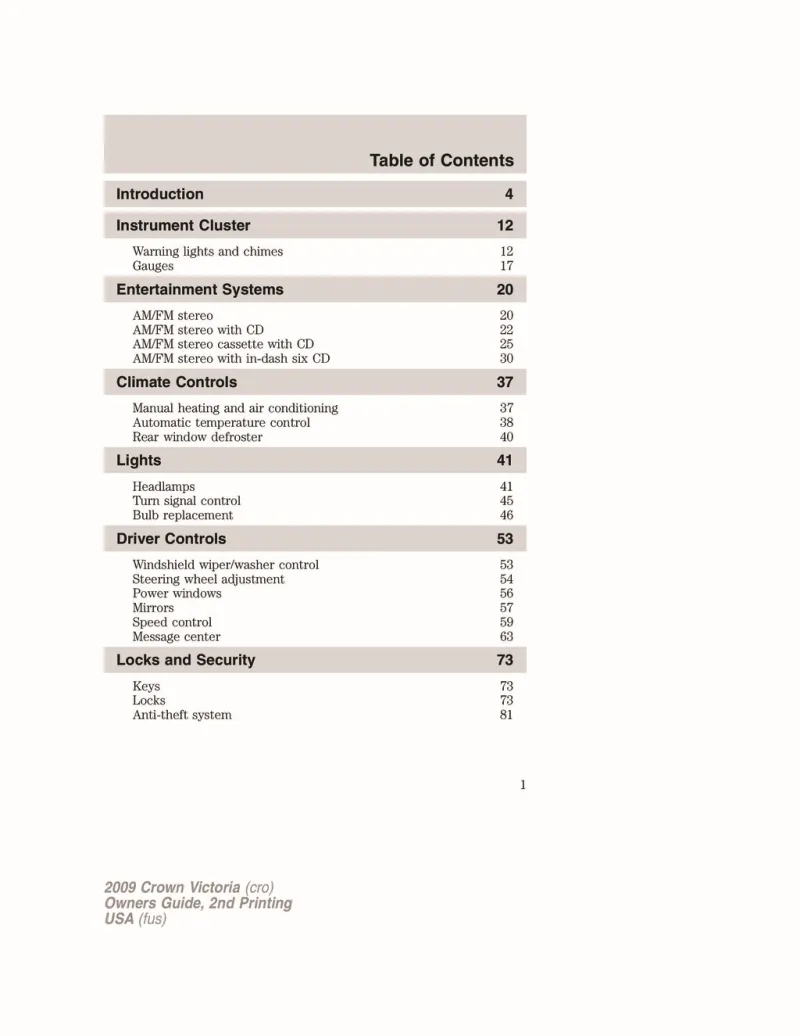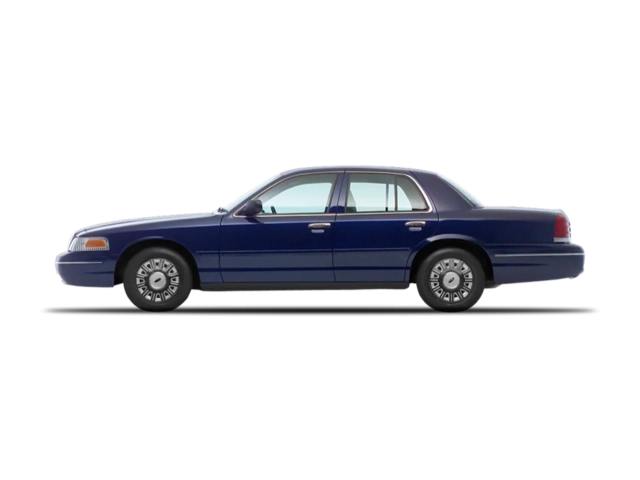2009 Ford Crown Victoria Owner's Manual

Table of Contents
2009 Ford Crown Victoria Overview
Introduction
The 2009 Ford Crown Victoria stands as a timeless representative of the full-size sedan segment, renowned for its robustness and dependability. Historically favored by law enforcement agencies and taxi services, this model embodies a blend of traditional design with modern amenities, making it a suitable choice for both practical and casual drivers. Its generous interior space and comfortable seating ensure that it remains a versatile choice for a variety of lifestyles.
Powertrains
Under the hood, the 2009 Crown Victoria is powered by a formidable 4.6-liter V8 engine, generating an impressive 250 horsepower and 297 lb-ft of torque. This engine is paired with a smooth 4-speed automatic transmission, providing a reliable and steady driving experience. While the Crown Vic doesn’t prioritize fuel efficiency, it achieves approximately 16 mpg in the city and 24 mpg on the highway, offering a blend of power and practical performance for everyday use.
Trims
The 2009 Crown Victoria is available in three distinct trims: the base model, the LX, and the police interceptor variant. The base model is equipped with essential features, while the LX adds more comforts such as premium cloth upholstery and power-adjustable front seats. The police interceptor variant offers specialized upgrades tailored for law enforcement, making it equally efficient for civilian and professional use.
Features
This model is equipped with a variety of features that enhance both comfort and convenience. Standard amenities include air conditioning, a CD player, and cruise control. Many models also come with optional upgrades such as leather upholstery, a premium sound system, and power accessories. Safety remains a priority, with standard features like anti-lock brakes and multiple airbags ensuring peace of mind for drivers and passengers.
Owners Manual
The 2009 Ford Crown Victoria owners manual serves as an essential resource, detailing maintenance schedules, troubleshooting techniques, and operating instructions for all features. It provides valuable insights to help owners maximize the longevity and performance of their vehicle, ensuring that the Crown Vic remains a reliable member of the family for years to come.
User manual download
The Ford Crown Victoria owner manual for the 2009 model year is to be found in PDF downloadable format on this page. The owner manual for the model year 2009 is free and in English, but the repair manuals are usually not easy to get and may cost more.
Manual Questions
Fill the form below and someone will help you!

